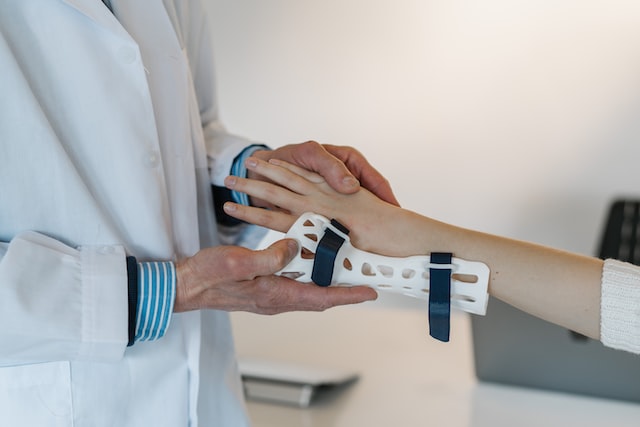Casts are made of plaster or fibreglass, while splints are usually made of wood, metal, or plastic. Casts must be removed by a doctor, while splints can be removed by the patient.
What is a splint?
A splint is a device used to support and immobilize a joint or bone to promote healing. It is typically made from a firm material such as wood, metal, or plastic. A splint can be applied to the body in a variety of ways, depending on the injury being treated. For example, a splint may be wrapped around the affected area or attached with Velcro straps.
Once applied, the splint must be left in place for the duration of the healing process. This can take several weeks or even months, depending on the severity of the injury. During this time, it is important to keep the splint clean and dry. The skin underneath the splint should also be monitored for any signs of irritation.
What is a cast?
A cast is a common type of orthopaedic device used to support and protect broken bones while they heal. Unlike a splint, which is simply an immobilization device, a cast forms a hard shell around the bone. This shell is usually made from plaster or fibreglass and is custom-fit to the patient’s body.
Splints Vs. Casts – The difference
A splint is a device used to immobilize and protect an injured body part. It is typically made of wood, metal, or plastic. A cast, on the other hand, is a hard, protective shell that is placed around an injured body part to hold it in place.
How long does it take for a splint or cast to heal?
A splint or cast can take anywhere from a few days to a few weeks to heal. The amount of time it takes for a splint or cast to heal will depend on the severity of the injury and the type of splint or cast that is used. For example, a simple wrist sprain may only require a short period of immobilization with a splint, while a more serious fracture may require a longer period in a cast.
Can a splint heal a fracture?
There are two main types of broken bones: greenstick and complete. Greenstick fractures are when the bone cracks but doesn’t break all the way through and usually occur in children. Complete fractures are when the bone is completely broken and usually occur in adults. A splint can heal both types of fractures, but a cast is only used for complete fractures.
How does a splint work?
A splint works by immobilizing the broken bone so that it can heal properly. It is important to keep the broken bone from moving so that it can heal in the correct position. The splint also takes the pressure off of the broken bone so that it doesn’t have to bear any weight while it heals.
Can a cast heal a fracture?
Casts are only used for complete fractures, not greenstick fractures. This is because a cast immobilizes the bone completely, which can interfere with healing if the bone is not in the perfect position. Casts also put pressure on the healing bone, which can delay or even prevent proper healing.
What you should not do with a splint
There are a few things you shouldn’t do with a splint:
-Don’t immerse it in water. This could cause the splint to loosen and no longer fit properly.
-Don’t remove it. Unless your doctor or healthcare provider tells you to, don’t try to remove the splint on your own.
-Don’t put any weight on it. If you have a leg splint, don’t stand or put any weight on it until your doctor or healthcare provider says it’s okay.
Can splints straighten fingers?
A splint can be used to straighten fingers, but it is not as effective as a cast. A cast will provide more support and stability to the finger while it heals.








